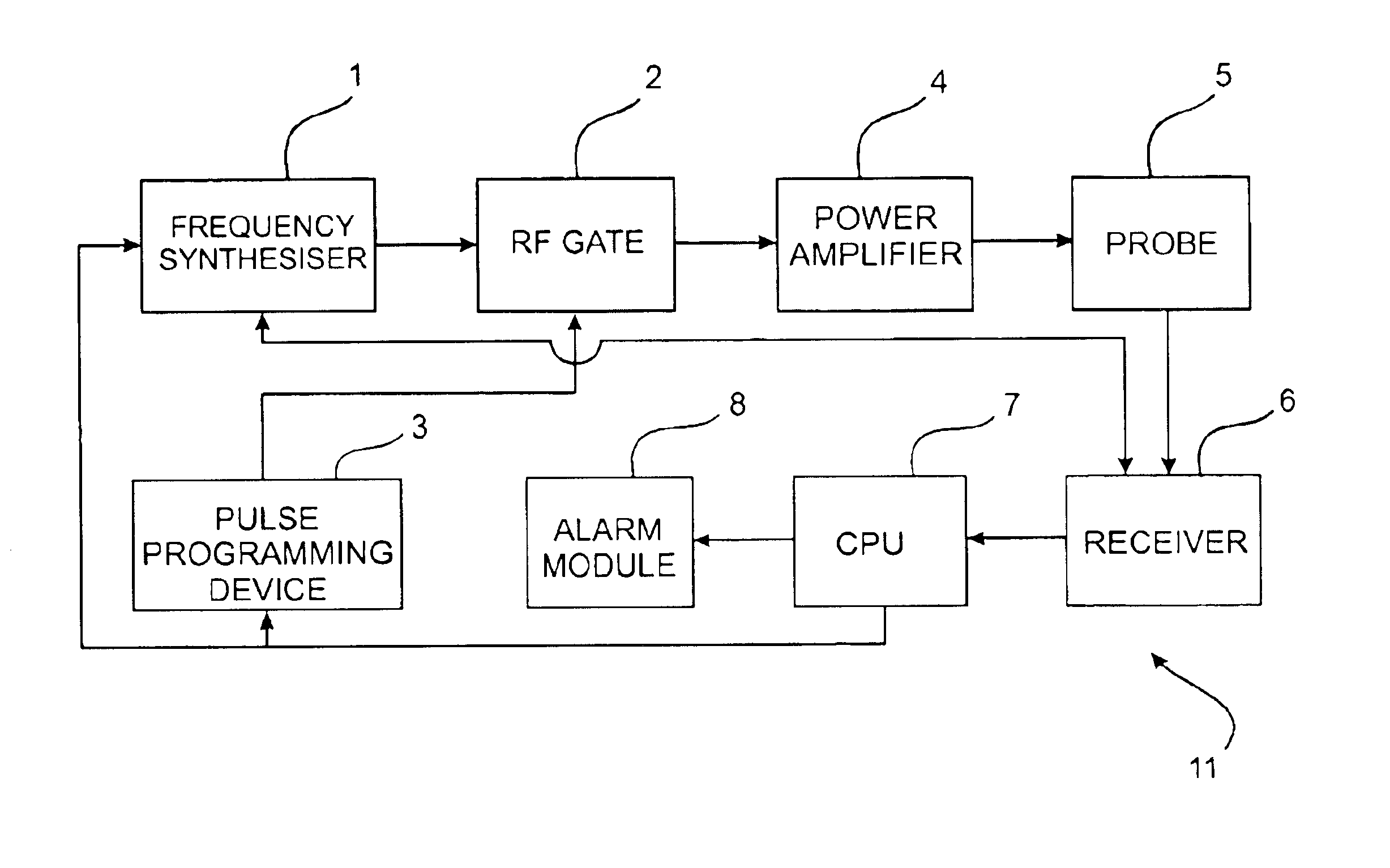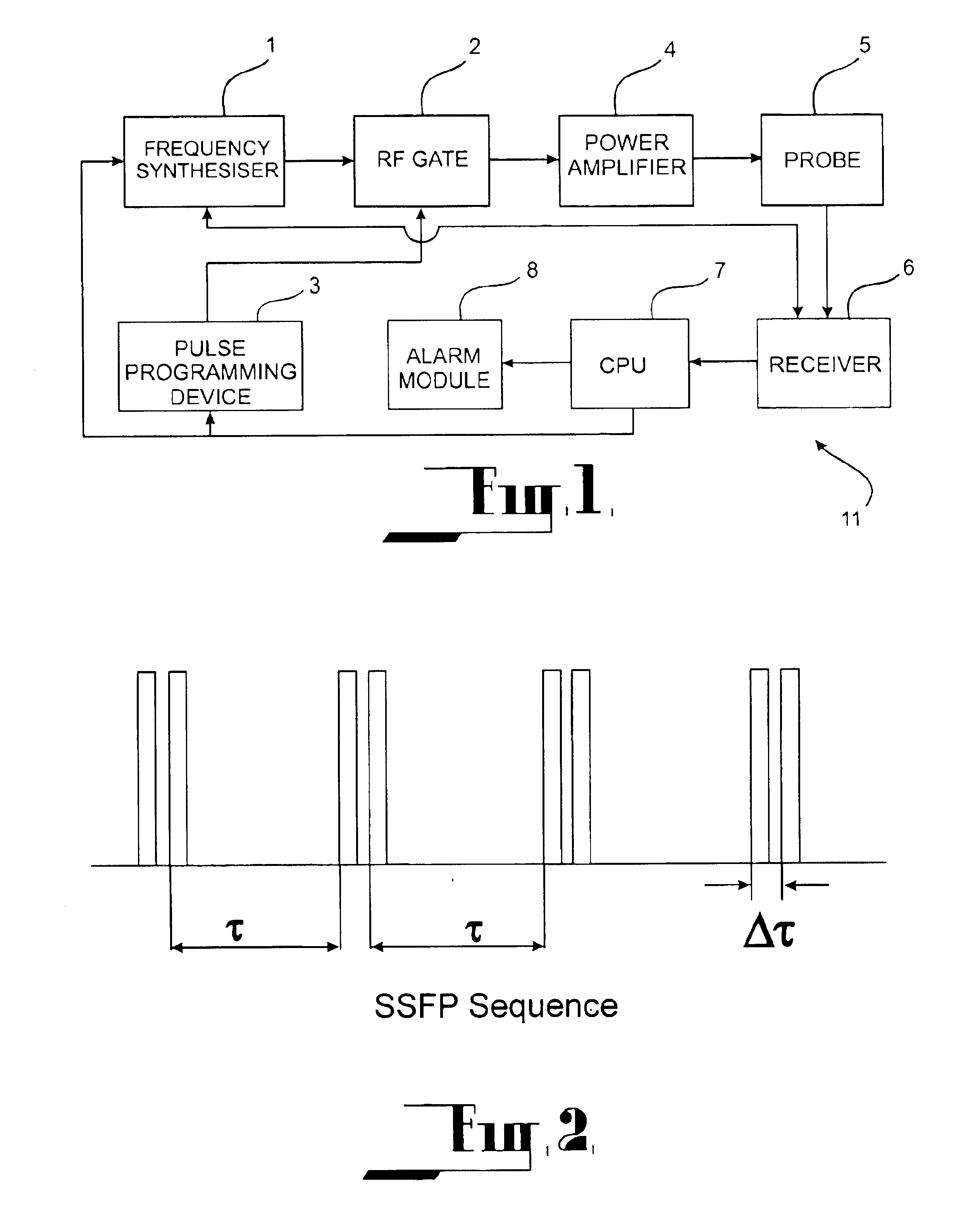Method and apparatus for detecting a substance using a nuclear resonance
a nuclear resonance and substance technology, applied in the field of nuclear resonance for material identification, can solve the problems of hampered use of ssfp multi-pulse sequence, anomalies are undesirable, and recover 1/square root over (2) or approximately 70% of the maximum available signal, and achieve the effect of increasing the accuracy of detection of prescribed substances
- Summary
- Abstract
- Description
- Claims
- Application Information
AI Technical Summary
Benefits of technology
Problems solved by technology
Method used
Image
Examples
Embodiment Construction
The embodiment is directed towards a device and method using NQR for detecting the presence of quadrupolar substances, which exhibit NQR intensity variations resulting from temperature variation and other factors such as temperature gradient (across the substance), crystalline impurities, crystalline phase and pressure. Such materials include certain types of explosives and narcotics substances containing quadrupolar nuclei such as 14N, 35Cl, 39K or 37Cl. Specific examples would be RDX (C3H6N6O6) and cocaine (C17H21NO4).
As shown in FIG. 1, in general terms, a device 11 for detecting the explosive or narcotic substance includes a frequency synthesiser (FS) 1 which generates an oscillating signal with a frequency f0 close to the NQR frequency of the prescribed substance sought to be detected. The oscillating signal is then passed to the input of a radio frequency (RF) gate 2, which is controlled by a signal from a pulse programming device 3, to generate a programmed RF pulse sequence ...
PUM
 Login to View More
Login to View More Abstract
Description
Claims
Application Information
 Login to View More
Login to View More - R&D
- Intellectual Property
- Life Sciences
- Materials
- Tech Scout
- Unparalleled Data Quality
- Higher Quality Content
- 60% Fewer Hallucinations
Browse by: Latest US Patents, China's latest patents, Technical Efficacy Thesaurus, Application Domain, Technology Topic, Popular Technical Reports.
© 2025 PatSnap. All rights reserved.Legal|Privacy policy|Modern Slavery Act Transparency Statement|Sitemap|About US| Contact US: help@patsnap.com



